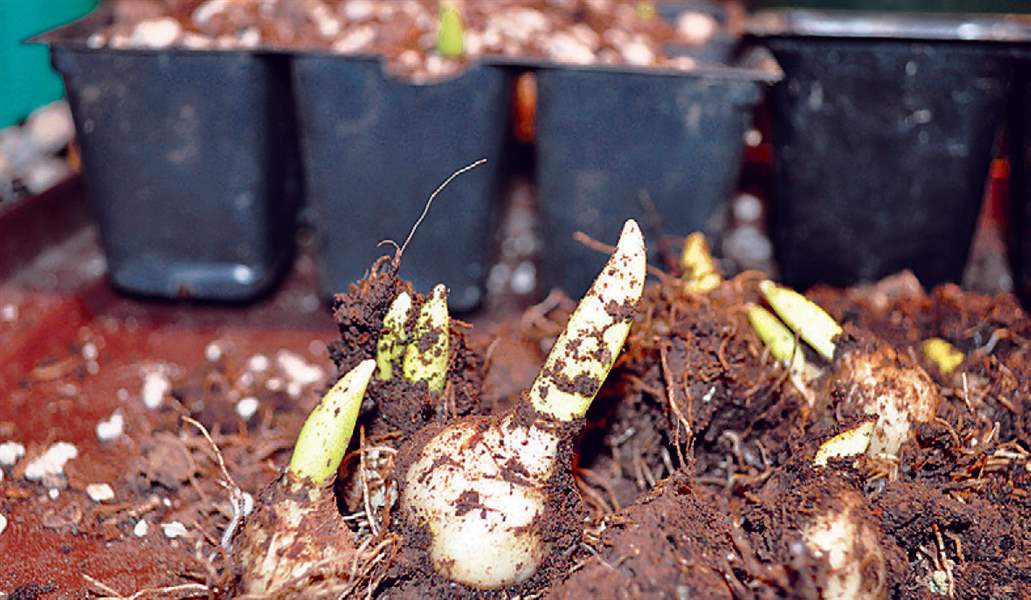
There are various ways to make more lilies from the ones you have
9/10/2013
Lily bulbs.
associated press

Lily bulbs.
I want more lilies. A lot more. And I mean true lilies (Lilium spp.) rather than daylilies (Hemerocallis spp.).
Casa Blanca is the variety that has put me in such a state. Its large, white petals flare out into trumpets, from whose frilly throats poke groups of rust-red anthers and single tear-capped stigmas. The heady fragrance from just one cut spray of blossoms can perfume a good portion of any home.
Sure, I could just plunk down some money and order more Casa Blanca and other lilies. But part of the fun of gardening is making new plants, and even a single lily plant offers a few avenues to this goal.
Seed challenges
It might seem that the most straightforward way is to let seeds develop and then plant them. Lily seed germination is not, however, all that straightforward. The seeds might germinate in as little as a couple of weeks or as long as 18 months. In the latter case, the plants first form small, underground bulblets, usually after a period of cool temperatures, before any sign of life appears above ground. Flowering from seed takes from two to four years.
Another wrinkle to seed sowing is that seedlings of lily varieties or hybrids will not be the same as their parents. They may be better, they may be worse, but they’ll be different.
Dig and multiply
Lilies are easy to multiply by just digging up and dividing clumps as they age. This time, the offspring do mimic their parents exactly. Wait until fall or spring to divide lilies, but don’t expect to get too many new plants out of a clump.
Bulbils and bulblets
Some lilies form little bulbs along their stems. Above ground, these small bulbs, now called bulbils, appear where leaves meet stems. Flick them off and plant them shallowly.
Little bulbs that form along stems below ground are called stem bulblets. Collect these, taking care to preserve any roots clinging to them as soon as the stems and leaves begin to wither. Plant them immediately, before they dry out, a couple of inches deep.
Expect bulbils or bulblets to form flowers that look just like their parents in one to three years.
Bulbils and stem bulblets are easy ways to propagate lilies, but only a few cultivated lilies form them. Still, it is possible to coax a lily that does not normally make bulbils or stem bulblets to do so. Some lilies form them in response to nothing more than having their flower buds pinched out before they open. Others need a bit more coaxing in the form of having their stems shortened by a half after the pinching. Yet another approach is to pinch off flower buds and then wrench the stem from the bulb, leaving the bulb in the ground. Lay the liberated stem in a trench and shoots will emerge along it, hopefully studded with bulbils.
Scale most of them
Scaling is the final method I’ll mention for making new lilies, lots and lots of them. Sometime in the next few weeks, dig up a lily bulb, remove some of the plump, firm, outer scales, and put them into a plastic bag along with plenty of moist perlite or sand.
Keep the bag in the dark at room temperature for about six weeks or until bulblets form at the bases of the scales. After that period, put the bag in a refrigerator for at least eight weeks, after which each bulblet can be potted up to grow.
Three years later, you’ll have flowers — oodles of them.